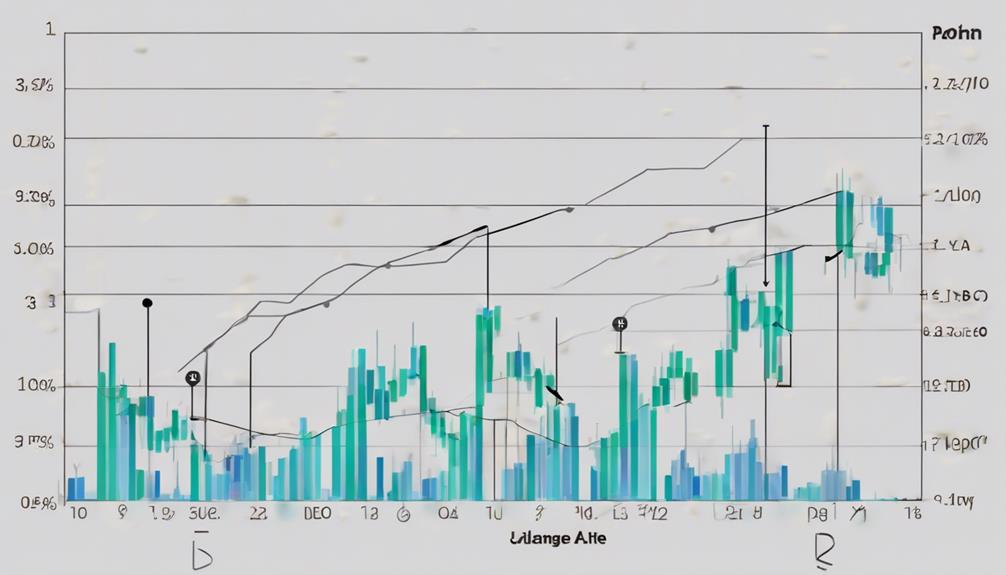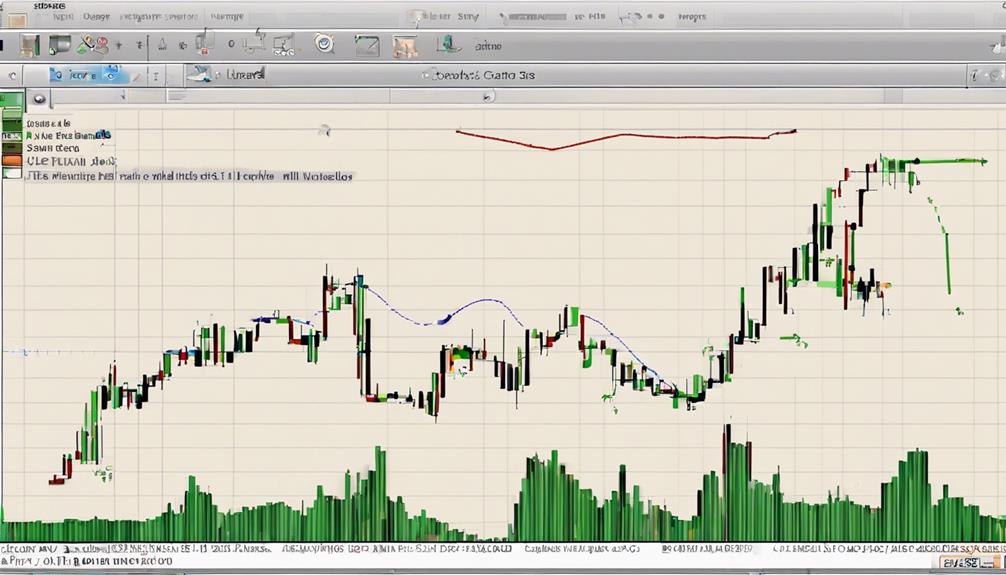Have you ever wondered how volume-based indicators can help you navigate the stock market more effectively?
Understanding the significance of volume in stock trading is vital, and three key indicators can provide you with valuable insights into market trends and potential price movements.
By incorporating these volume-based tools into your trading strategy, you can gain a deeper understanding of market dynamics and make more informed decisions.
Key Volume Indicators for Stocks
When analyzing stocks, understanding key volume indicators is essential for gauging market sentiment and potential price movements. Volume plays a crucial role in determining the strength of price trends and identifying possible turning points.
The On-Balance Volume (OBV) indicator measures buying and selling pressure by cumulatively adding or subtracting volume based on price movements. Money Flow Index (MFI) combines volume and price to signal overbought or oversold conditions, indicating potential reversals.
Volume-Weighted Average Price (VWAP) offers insight into intraday trend confirmation by calculating the average price considering both volume and price. The Accumulation/Distribution Line (Accu) showcases the relationship between price and volume, helping to discern whether a stock is being accumulated or distributed.
Chaikin Money Flow (CMF) reflects the flow of money in or out of a security, shedding light on buying and selling pressure dynamics.
Understanding Volume-Based Trading Signals

To gain a deeper understanding of market dynamics, exploring volume-based trading signals is crucial in assessing buying and selling pressure within the stock market. Volume analysis provides insights into market sentiment and can help identify potential trend reversals by observing the relationship between price movements and volume indicators.
Indicators like On-Balance Volume (OBV) and Chaikin Money Flow offer valuable information on buying pressure and market conviction. High trading volumes during breakouts indicate strength in price movements, offering traders potential entry and exit points.
Practical Application of Volume Indicators

Utilizing volume indicators such as On-Balance Volume (OBV) and Money Flow Index (MFI) in stock trading allows for a practical assessment of buying and selling pressure, aiding in strategic decision-making based on market dynamics. Analyzing volume patterns helps identify trend reversals and confirm price breakouts, offering valuable insights into market sentiment.
By comparing current trading volume to historical data, traders can evaluate the strength behind price movements and make informed entry and exit decisions. Integrating volume indicators into technical analysis enhances trading strategies, providing a comprehensive view of market activity and assisting in timely decision-making regarding buying and selling pressure.
Incorporating these tools improves the overall effectiveness of trading strategies in navigating the complexities of stock market dynamics.
Are Volume-Based Indicators for Stocks and Forex Analysis Interchangeable?
When it comes to stock and Forex analysis, the use of the best volume Forex indicators is crucial. While some volume-based indicators can be interchangeable between stocks and Forex, it’s important to understand the specific nuances of each market to make informed trading decisions.
Frequently Asked Questions
What Is the Best Indicator Based on Volume?
The best indicator based on volume is the On-Balance Volume (OBV). Developed by Joseph Granville in 1963, OBV compares asset volume with price movements, serving as a momentum indicator that offers actionable signals for traders and investors.
What Is the Most Accurate Volume Indicator in Tradingview?
When trading on TradingView, the most accurate volume indicator for you is the Money Flow Index (MFI). It ranges from 0 to 100, helping you identify overbought and oversold conditions, spot divergences, and assess market sentiment effectively.
What Is the Difference Between OBV and Mfi?
In trading, OBV tracks buying and selling pressure by totaling volume on up days and deducting on down days. MFI combines price and volume to signal overbought or oversold conditions. OBV is cumulative, MFI is volume-weighted.
What Is the Volume Prediction Indicator?
The Volume Prediction Indicator (VPI) utilizes historical volume data to forecast future trading volume. It anticipates market liquidity changes, identifies high/low volume periods, and aids in decision-making for trade entries and exits, providing insights into potential price movements.
Conclusion
As you navigate the world of stock trading, remember that volume-based indicators are your guiding lights. Picture yourself sailing through choppy waters, relying on OBV, MFI, VWAP, and Accu to steer you towards profitable trades.
These tools illuminate the path ahead, showing you where to enter and exit positions with confidence. Embrace the power of volume analysis, and watch as your trading journey unfolds with clarity and precision.
